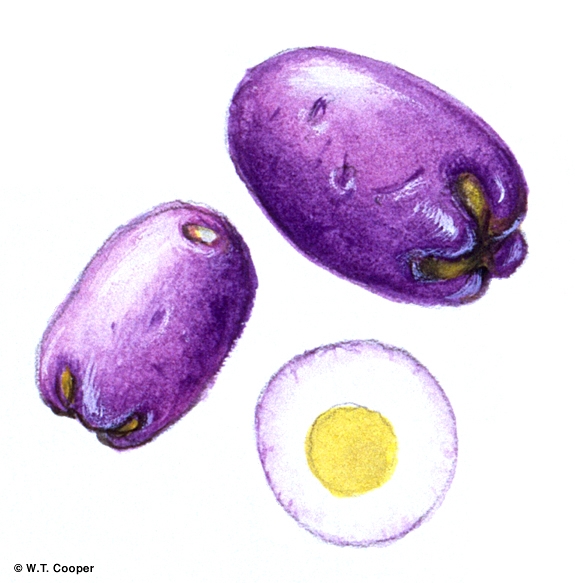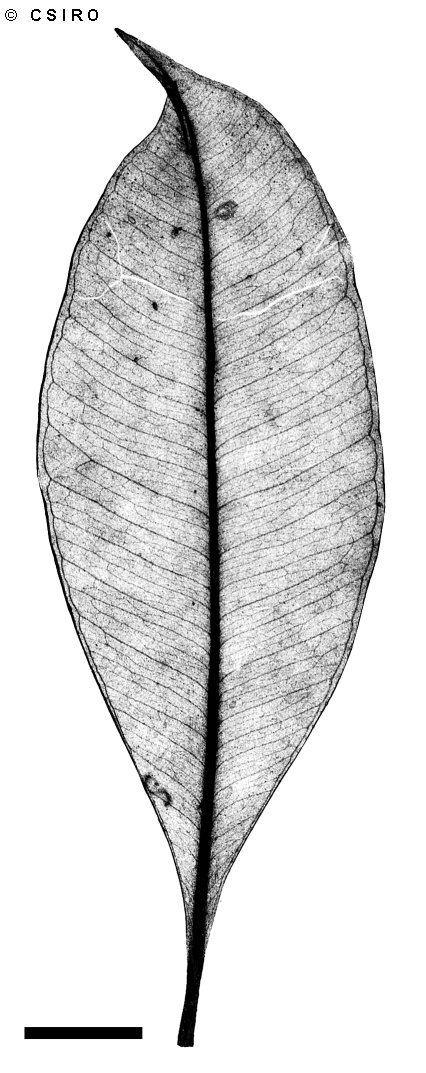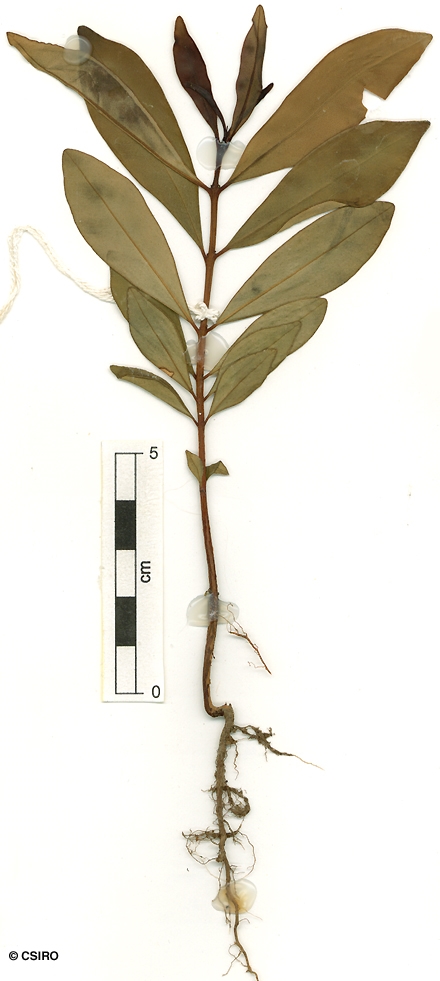Australian Tropical Rainforest Plants - Online edition
Syzygium johnsonii (F.Muell.) B.Hyland





Hyland, B.P.M. (1983) Australian Journal of Botany Supplementary Series 9: 95.
Rose Satinash; Watergum; Satinash, Rose; Johnson's Satinash; Satinash, Johnson's
Outer bark generally pink or reddish brown. Adventitious roots sometimes present towards the base of the stem.
Oil dots quite large and conspicuous but somewhat sparsely distributed. Leaf blades about 5.7-11.7 x 2-7 cm. Petiole and midrib grooved or depressed on the upper surface. Crushed leaves emit a fairly strong odour, resembling mango (Mangifera indica). Lateral veins scarcely visible on the upper surface.
Bracts deciduous, absent at anthesis. Calyx tube (hypanthium) + pedicel about 3-6 mm long, calyx tube (hypanthium) about 3-5 mm diam., calyx lobes slightly dimorphic, rounded to broadly triangular, about 1.5-2 mm long. Petals +/- orbicular, about 2-2.5 mm diam., oil dots present or absent, up to five per petal. Outer staminal filaments about 5-13 mm long, anthers about 0.4-0.6 x 0.4-0.7 mm, gland terminal, conspicuous. Ovules about 10-17 per locule, placentas central, ovules radiating, ascending. Style about 8-17 mm long, approximating the stamens.
Fruits oblong, attaining about 20 x 15 mm., calyx lobes persistent, about 2 mm long, pericarp succulent. Seed solitary, about 10 x 6 mm, testa free from or only slightly adhering to the pericarp and free from the uniformly textured cotyledons. Radicle lateral, cotyledons mauve or purple when fresh, petiolate, cotyledonary stipules present.
This species occasionally produces millable logs and the timber is marketed as Rose Satinash. Wood specific gravity 0.82-0.85. Hyland (1983).





